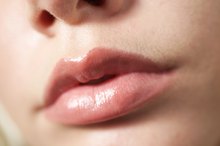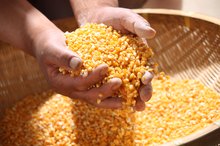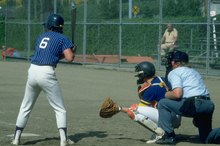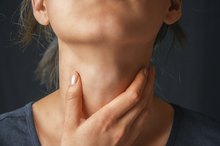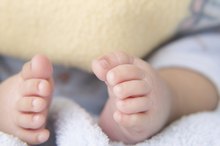Nose Blisters in Children
Blisters in and around the nose are extremely painful and can quickly become infected. When children develop nose blisters, they require medical care to determine the precise cause. Although the blisters are frequently caused by mild infections, they don't normally indicate a serious underlying condition. If your child has suddenly developed blisters in her nose, consult your pediatrician.
Infections and Illnesses
Blisters around the nose frequently indicate an infection. Staph infections are caused by the bacteria Staphylococcus aureus, a bacteria found in many people's noses and skin, according to the website KidsHealth 4. Chicken pox occasionally begins around the nose, and manifests as itchy, crusty blisters. The CDC explains that hand, foot and mouth disease is a common childhood virus spread through contact with infected people and animals 3. Children with this illness often develop fevers and blisters around the nose and mouth.
- Blisters around the nose frequently indicate an infection.
- Children with this illness often develop fevers and blisters around the nose and mouth.
Other Causes
How to Get Rid of Dry Skin on Lips
Learn More
Children with sinus infections may develop blisters caused by frequent rubbing of the nose. Although these blisters are typically go away when the sinus infection clears up, they can become infected, pediatrician William Sears explains 1. Some nose blisters may be allergic reactions caused by direct skin contact with allergens. Food sensitivities occasionally irritate the skin, and the reaction may occur several days after eating the offending food, according to Sears.
- Children with sinus infections may develop blisters caused by frequent rubbing of the nose.
- Food sensitivities occasionally irritate the skin, and the reaction may occur several days after eating the offending food, according to Sears.
Home Treatment
Never squeeze or pop blisters around the nose. This can push infection deeper into the skin and spread it to other areas of the body. Encourage your child to avoid rubbing or picking at the blisters. This may further irritate the skin, especially if the blisters are caused by skin irritation. Encourage your child to drink plenty of water. Sears says that dehydration worsens the symptoms of staph infections, skin allergies and hand, foot and mouth disease 34. Over-the-counter numbing gels and sprays may help alleviate pain and itching, but only use these under the advice of your child's pediatrician.
- Never squeeze or pop blisters around the nose.
- Encourage your child to avoid rubbing or picking at the blisters.
Medical Treatment
How to Get Rid of a Scabby Nose
Learn More
Your child's pediatrician will determine the cause of the nose blisters. If they are caused by an infection, she will probably prescribe antibiotics. Give your child the entire course of the antibiotic, even if symptoms clear up before the antibiotic is gone. Your pediatrician may test your child for allergies or ask about foods he has recently eaten to determine if the blisters are caused by an allergic reaction.
- Your child's pediatrician will determine the cause of the nose blisters.
- Your pediatrician may test your child for allergies or ask about foods he has recently eaten to determine if the blisters are caused by an allergic reaction.
Related Articles
References
- "The Portable Pediatrician"; William Sears, M.D., et al.; 2011
- "Caring For Your Baby and Young Child"; American Academy of Pediatrics; 2009
- KidsHealth.org: Staph Infections
- Shashikumar B, Reddy RR, Harish M. Oral hemorrhagic blister: an enigma. Indian J Dermatol. 2013;58(5):407. doi:10.4103/0019-5154.117337
- Worthing RM, Percy RL, Joslin JD. Prevention of Friction Blisters in Outdoor Pursuits: A Systematic Review. Wilderness Environ Med. 2017;28(2):139-149. doi:10.1016/j.wem.2017.03.007
- Harvard Health Publishing, Harvard Medical School. Frostbite 404 404.
- Institute For Preventive Foot Health. Causes of Blisters.
- PathologyOutlines.com. Skin - nontumor, Blistering disorders, Blood blister.
- U.S. National Library of Medicine, Medline Plus. Blisters.
Writer Bio
Brenna Davis is a professional writer who covers parenting, pets, health and legal topics. Her articles have appeared in a variety of newspapers and magazines as well as on websites. She is a court-appointed special advocate and is certified in crisis counseling and child and infant nutrition. She holds degrees in developmental psychology and philosophy from Georgia State University.
